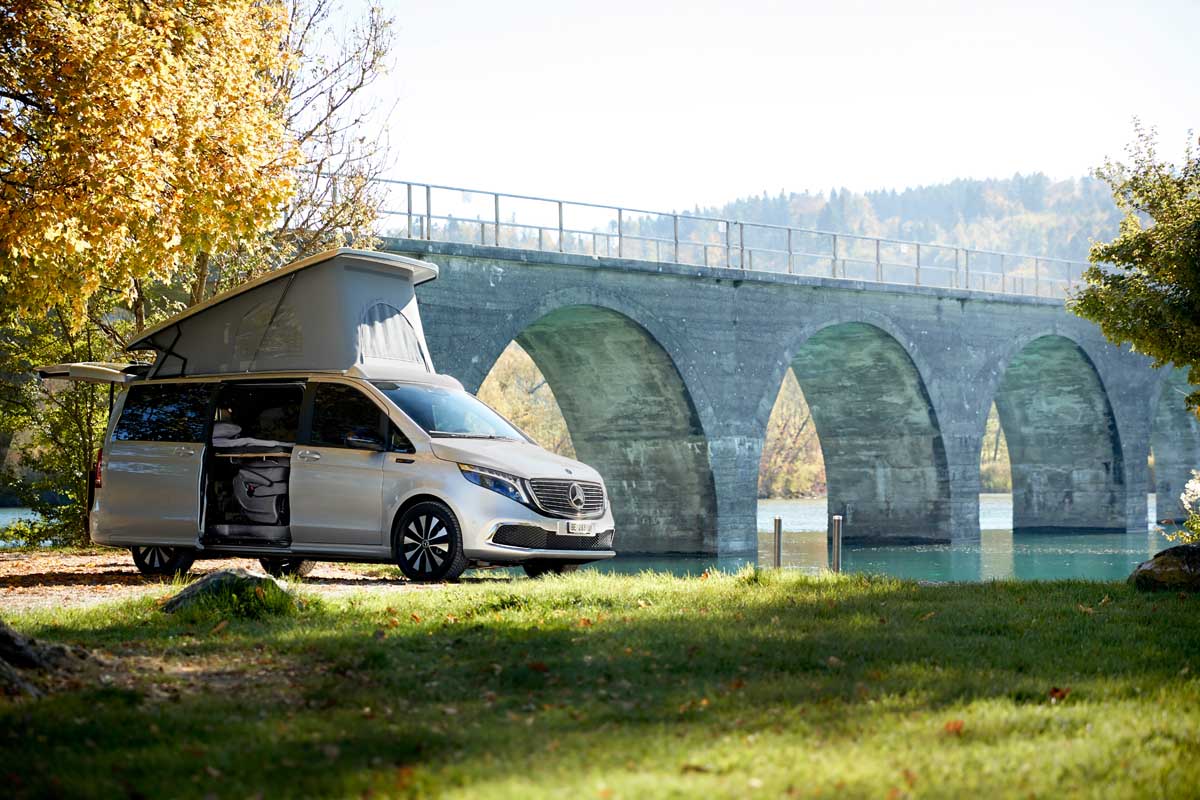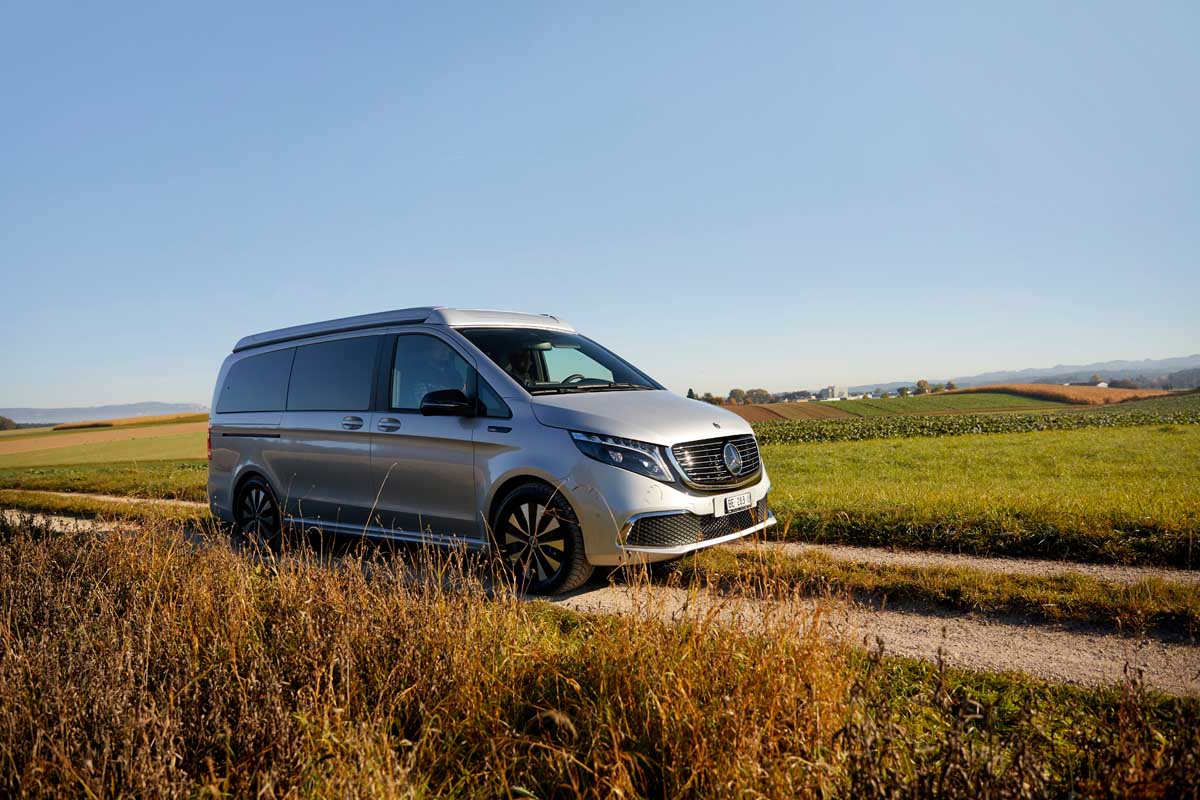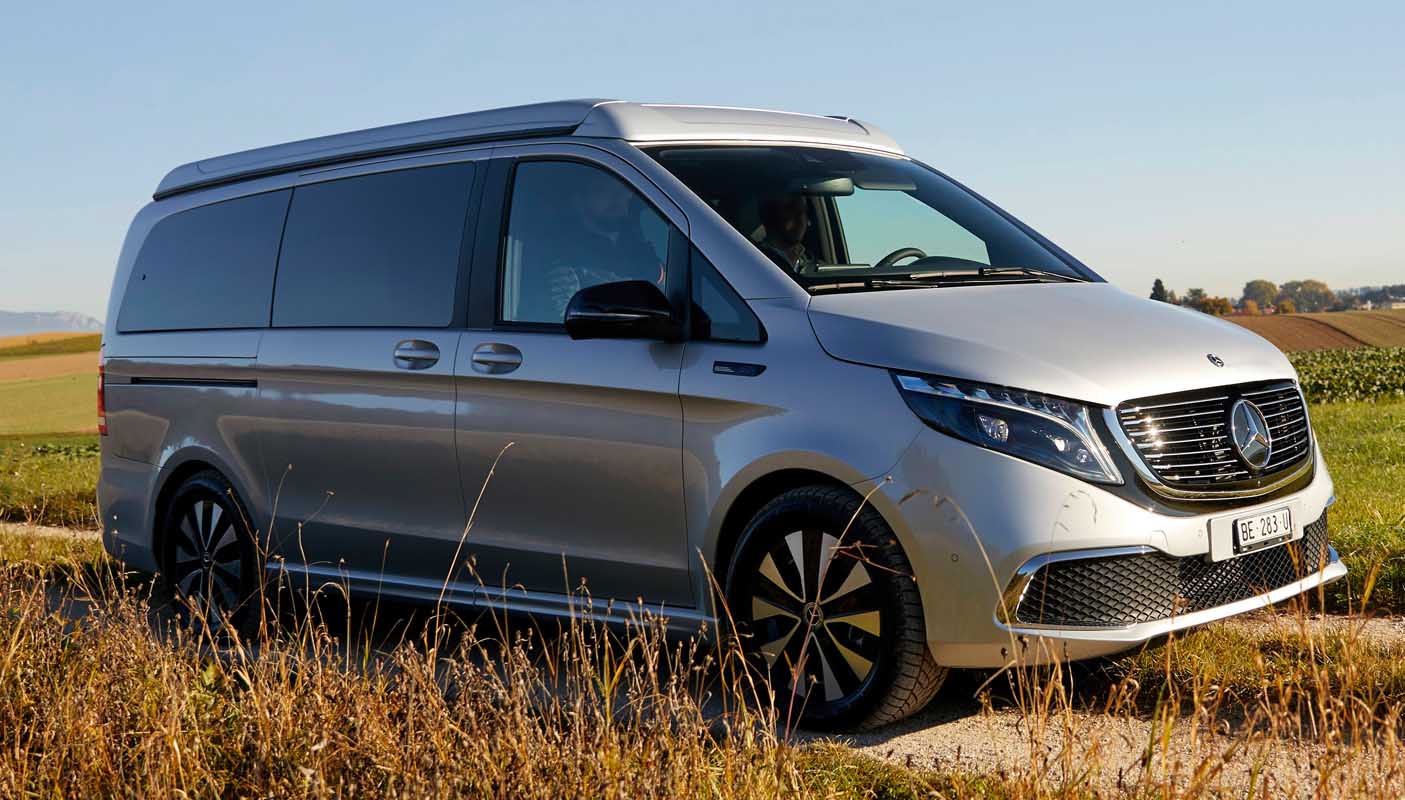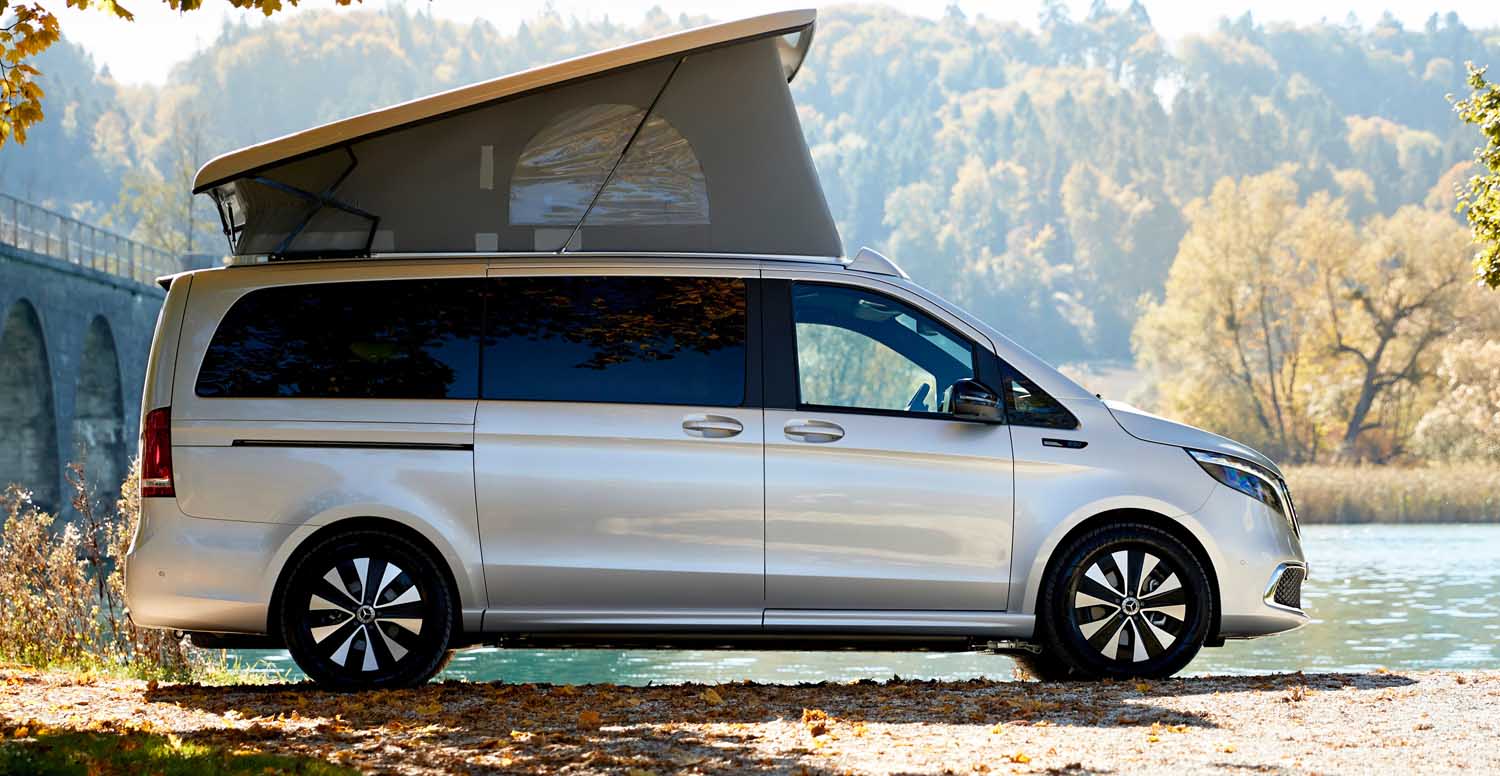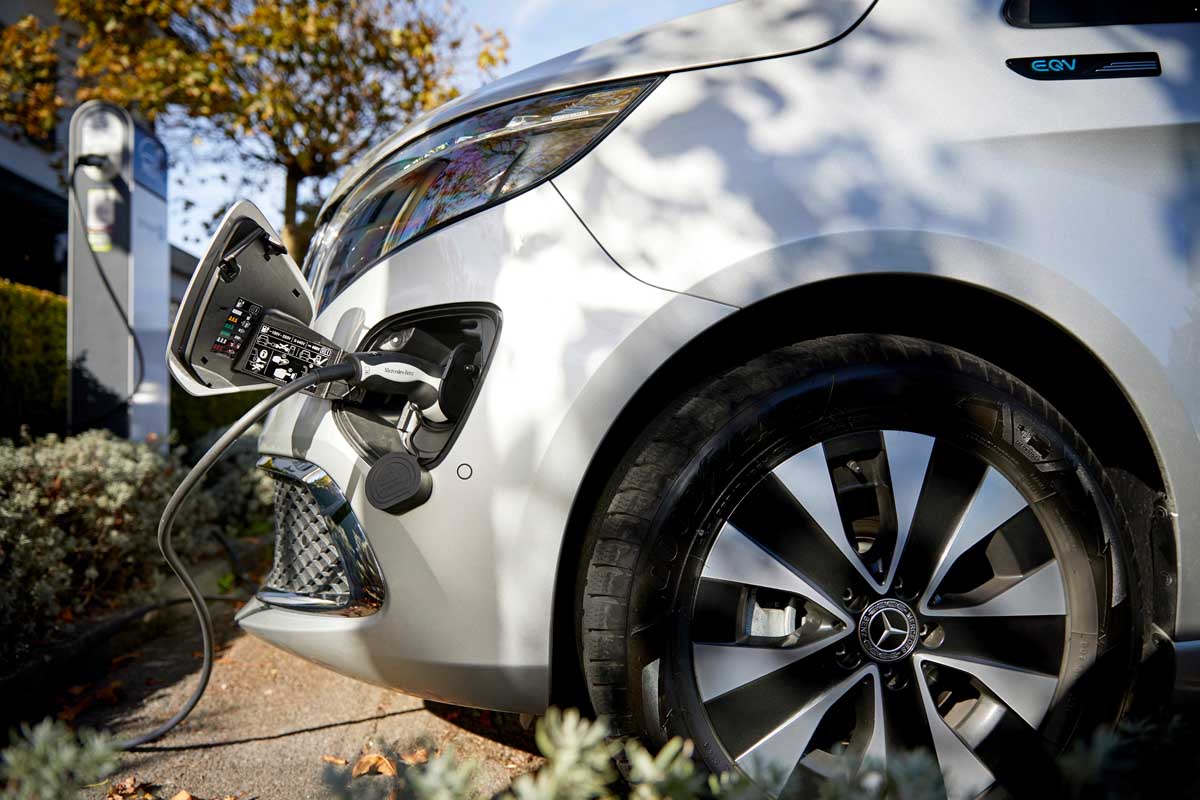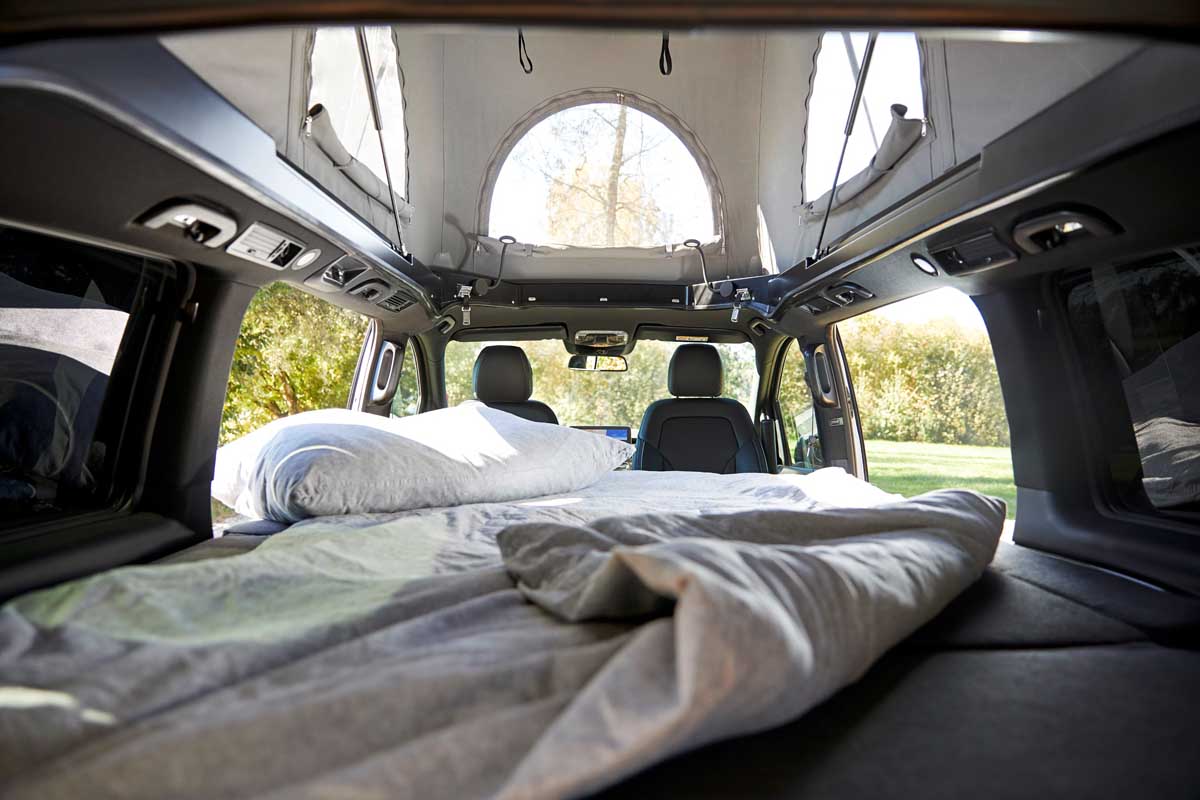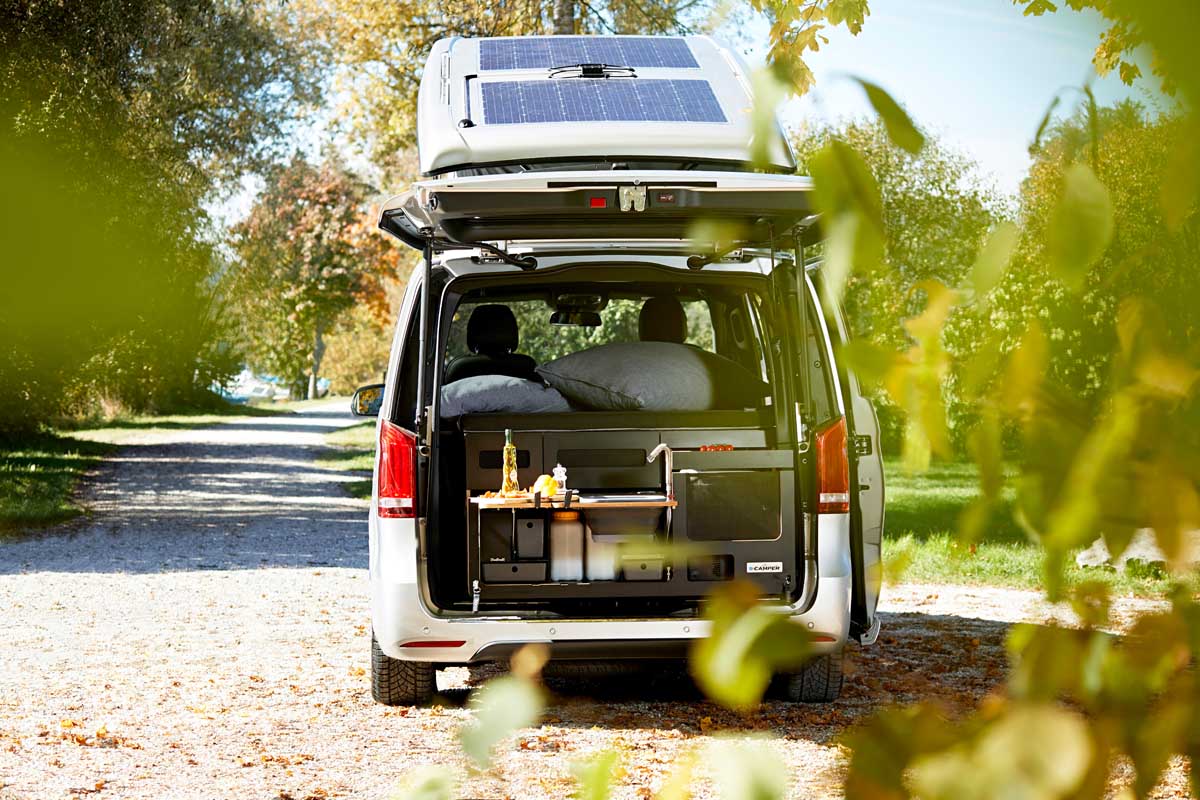
In recent years, Mercedes‑Benz Vans has increasingly established itself in the motorhome market with its compact ‘in-house’ Marco Polo camper van family; and also as a successful basic vehicle supplier for motorhome manufacturers worldwide – and that across its entire vans portfolio. Now the brand with the three-pointed star is taking the next step and is approaching the central topic of the coming years – the electric and thus locally emission-free future of the motorhome industry. The exchange with end customers and industry experts as well as cooperation with other manufacturers initially play a central role. One of the first market-ready eCamper is based on the battery-electric EQV. The conversion comes from the Swiss company Sortimo Walter Rüegg PLC, is already available in two-invoice transaction and includes a pop-up roof, a bed unit for the rear compartment and a kitchen module for the luggage compartment.
Klaus Rehkugler, Head of Sales and Marketing Mercedes‑Benz Vans: “The motorhome market is of strategic importance for Mercedes‑Benz Vans. We want to continue to grow here and play a pioneering role in terms of innovation and sustainability. For us it is clear: The future is electric, also in the motorhome industry!”
With the EQV to locally emission-free van-life enjoyment
Mercedes-Benz Vans has a firm policy of aspiring to leadership in the field of electromobility and is systematically electrifying all model series. The portfolio, which is already available on the market, also includes the EQV – the battery-electric driven counterpart of the V-Class mid-size van. The EQV is available with two different battery variants: the EQV 300 with a 90 kWh battery and a range[1],[2] of 326‑363 kilometres according to WLTP (electricity consumption according to NEDC combined: 27.1‑26.3 kWh/100 km; combined CO₂ emissions: 0 g/km)[3] and the EQV 250 with a 60 kWh battery and a range1,2 of 213-236 kilometres according to WLTP (electricity consumption according to NEDC combined: 27.6-26.9 kWh/100 km; combined CO₂ emissions: 0 g/km)3. Both models are available in two lengths (long with 5140 cm or extra-long with 5370 cm). At the rapid charging station, for example, the EQV 300 charges from ten to 80 percent in about 45 minutes[4]. In addition, the EQV is incorporated into an electric mobility eco-system consisting of intelligent navigation with active range management and cloud-based services and apps. The infotainment system MBUX (Mercedes‑Benz User Experience) serves as the central control unit. With these qualities, the EQV offers a wide range of applications for a wide variety of customer needs and does so locally emission-free – including, most recently, for van-lifers, as Sortimo Walter Rüegg PLC is showing together with Mercedes-Benz Vans.
Conversion concept from Sortimo with solar modules for additional sustainability and self-sufficiency
Sortimo’s conversion concept is modular[5]. Full-range options include a pop-up roof with roof bed and a multifunction box with bed and kitchen unit. You will find this in the luggage compartment of the vehicle. The kitchen unit uses a drawer system and features include a sink, a two-ring removable gas cooker, a refrigerator box, and drawers for cutlery, cooking utensils and supplies. The bed system is installed above the kitchen unit. This can be unfolded in a few simple steps to create a bed that is precisely tailored to the vehicle width of the EQV. When folded, the rear seats can be used without restriction. The special feature of the camping modules is their lightweight construction. This pays off especially when used in an electric van, because every kilogramme saved means greater range. The two solar panels with a total output of around 400 watts, which Sortimo can install on request, are also particularly light and ensure additional self-sufficiency. They charge both the starter battery and the auxiliary battery for camping. Further equipment includes among others: darkened rear windows, interior lighting for the rear compartment, including integrated USB ports, and swivelling driver and front passenger seats.
With the optionally available three-person bench seat/berth, the EQV also already meets basic camping requirements ex-factory.
[1] The range was determined on the basis of Directive 2017/1151/EU.
[2] The actual range is also dependent on the individual driving style, road and traffic conditions, the outside temperature, as well as whether the air conditioning system/heating is in use, and may therefore differ.
[3] Electrical consumption has been determined on the basis of Directive 692/2008/EC.
[4] Minimum charging time from 10 to 80 % under optimal conditions at a DC charging station with a 400 volt supply, 300 A current; the charging time may vary depending on various factors, such as ambient and battery temperature as well as whether additional auxiliary consumers are in use, e.g. heating.
[5] The content of the conversion concept was provided by the body builder. Mercedes-Benz AG and its affiliated companies assume no liability or guarantee for content that was provided exclusively by the body builder.
